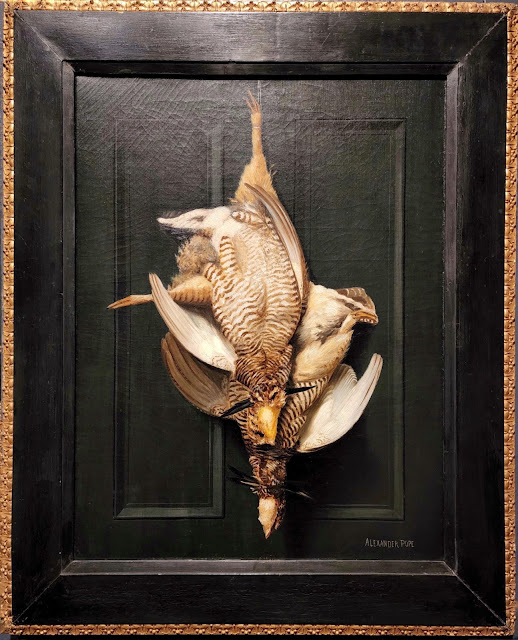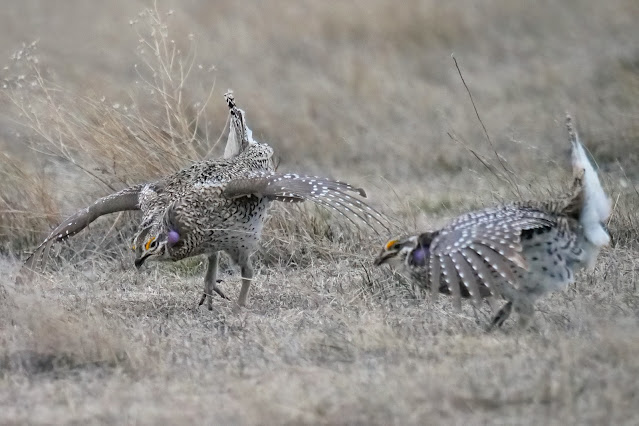Around Every Corner
Christine and I made a visit to the National Museum of Wildlife Art while in Jackson Hole, Wyoming and as we walked the halls enjoying the beautiful art we came across this piece by Alexander Pope (1849-1924).
The title is Hanging Grouse, c. 1890, oil on canvas. The painting depicts the now-extinct heath hen, the last living grouse known as Booming Ben who lived on Martha's Vineyard. He was last seen on his traditional lekking ground in 1932.
Heath hens (Tympanuchus cupido cupido) were a subspecies of the greater prairie chicken and we felt the need to tell his story.
Common during colonial times in coastal regions from southern New Hampshire to northern Virginia, heath hens were hunted by settlers and suggested to be the main course for the Pilgrim's Thanksgiving feast, not wild turkey.
The heath hen was extirpated from the mainland in 1870 due to over hunting, poaching and feral cat predation leaving only a small number (less than 200 birds) on Martha's Vineyard. A hunting ban and creation of a Heath Hen Reserve helped increase the population but in the end a number of factors including wildfire, severe winter, predatory Northern Goshawks and disease began their final demise.
Heath hens were one of the first bird species that Americans tried to save from extinction. Today, grouse populations are still in the cross hairs. Pressure from oil and gas exploration, encroaching conifers, urban sprawl, transmission lines and other issues threaten further success for the birds.
Thanks for reading Chicks on a Grouse Trip. We hope this blog becomes an educational tool that will inspire readers to learn more, care more and take action to boost grouse populations in the United States.





It has been fun. Hope you have a safe trip home.
ReplyDeleteThanks Marshall! We miss the birds already.
Delete